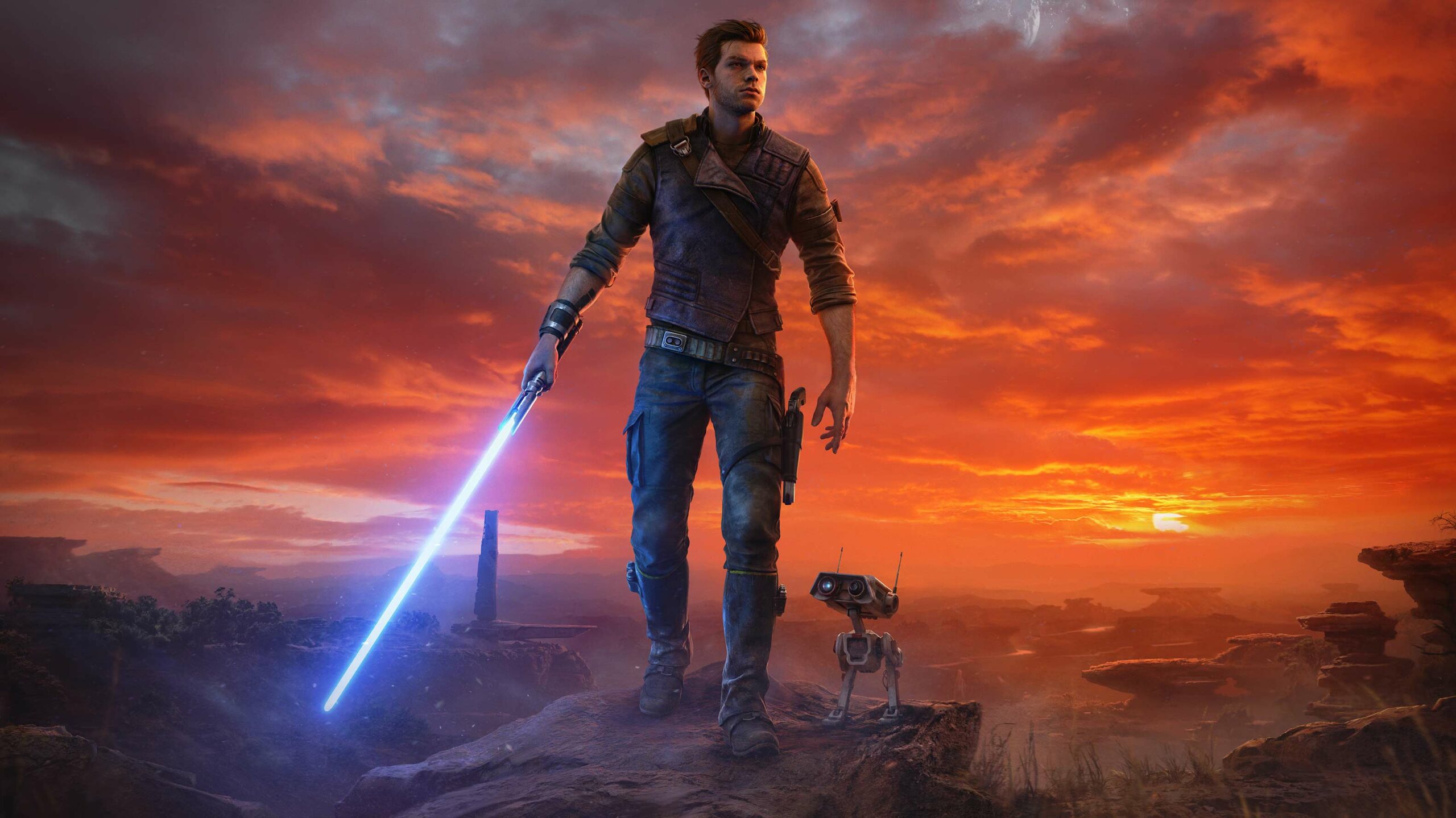
2019’s Star Wars Jedi: Fallen Order was something of a revelation.
The Respawn-developed game blended a classic galaxy-spanning Star Wars adventure with an approachable spin on Dark Souls combat, stylish platforming and Metroidvania-style progression to excellent effect. It ended up being such a hit that Respawn’s parent company, EA, realized that, hey, people actually like single-player games.
More importantly, it felt like a breath of fresh air for Star Wars as a whole. With so much of the Disney era of the franchise feeling more like nostalgia bait than genuinely compelling stories in their own right, Respawn’s predominantly standalone pocket of the galaxy far, far away, while not without its own issues, has been truly welcome. That feeling extends to Fallen Order‘s sequel, Survivor, which meaningfully improves upon the original game in almost every conceivable way while also charting an even more exciting course for Star Wars as a whole. The end result is an outstanding game in its own right and an early Game of the Year contender.
Fear is the path to the dark side
Part of the brilliance of Fallen Order was its focus on a Jedi Padawan, Cal Kestis (Cameron Monaghan), who managed to escape the Jedi Purge as seen in Revenge of the Sith. What would it mean for any Jedi — especially a young, inexperienced one — to survive such horrifying events? How can you possibly move forward from that? Using the long-form storytelling potential of video games to directly tackle those questions, Respawn succeeded in letting you fully embody Cal and feel his pain. Only through an extremely likable supporting cast, including the disgraced ex-Jedi Cere and gothic Nightsister Merrin, was Cal able to begin the healing process.
So, if the first game is about survivor’s guilt and learning to deal with grief through a found family, Survivor is all about Cal’s efforts to protect said family. To what lengths would you go to protect the ones you love? Over the course of a 20-plus hour campaign, Respawn unpacks Cal’s fears of losing everything he’s built to the Empire, and it makes for a surprisingly powerful, gripping narrative. In many ways, it echoes the inner conflict that George Lucas rather clumsily tried to convey through Anakin Skywalker in the prequels, albeit in an infinitely more effective fashion.
The decision to set the game five years after Fallen Order was also wise, as it creates a real sense of narrative intrigue surrounding the time in between games — including what made Cal and the Mantis crew go down separate paths — that you’ll slowly unpack through dialogue and flashbacks.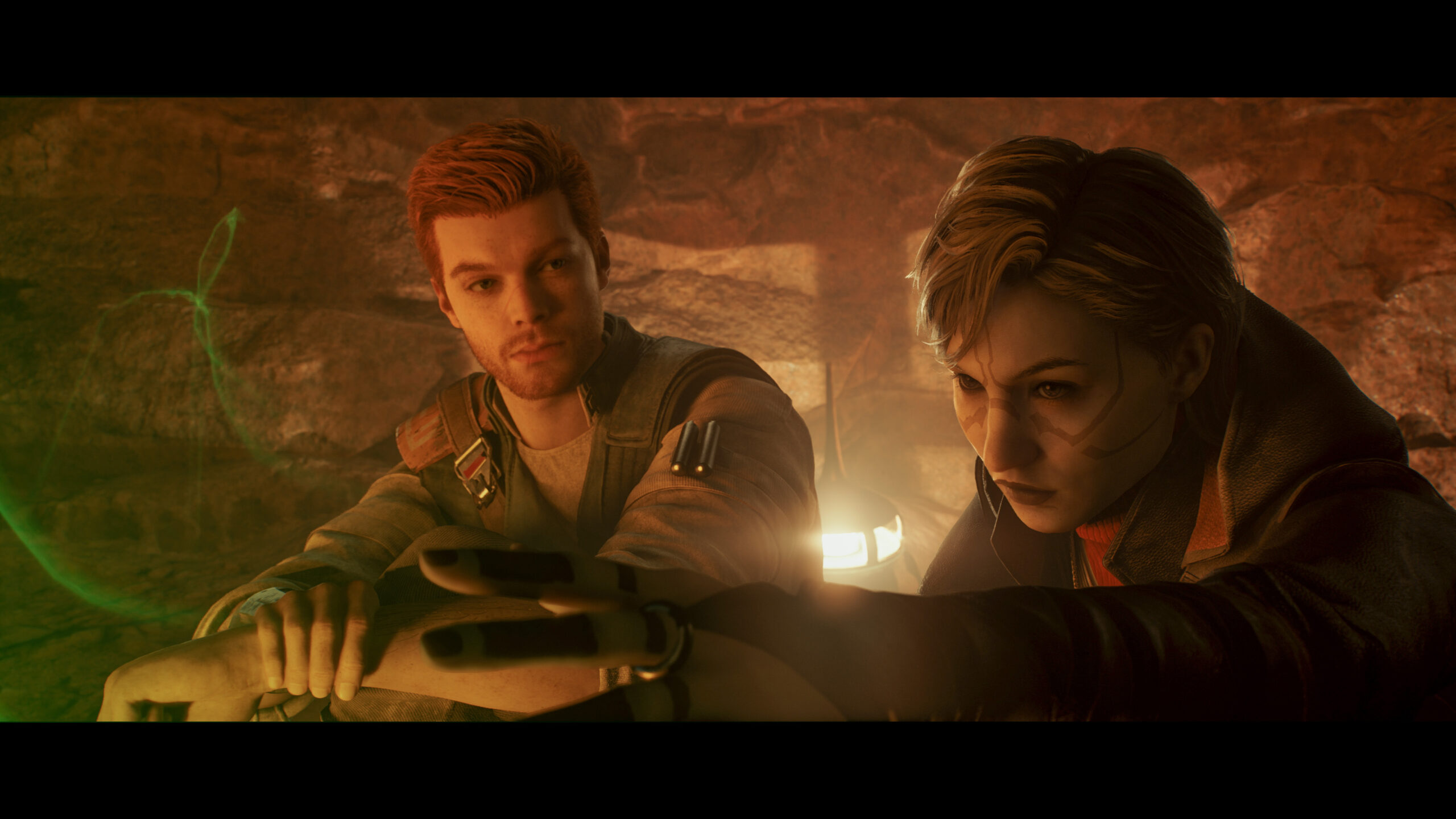 Without getting into spoilers, there’s also a MacGuffin that Cal and his adversaries are chasing that hails from the High Republic era, the hundreds of years that precede the Skywalker Saga. Through this setup, Respawn is able to have its cake and eat it, too, mixing the familiar iconography of the original trilogy with tantalizing morsels from a largely untapped period in the Star Wars canon.
Without getting into spoilers, there’s also a MacGuffin that Cal and his adversaries are chasing that hails from the High Republic era, the hundreds of years that precede the Skywalker Saga. Through this setup, Respawn is able to have its cake and eat it, too, mixing the familiar iconography of the original trilogy with tantalizing morsels from a largely untapped period in the Star Wars canon.
Indeed, learning more about the Jedi Order long before the events of The Phantom Menace adds a significant amount of flavour to an already strong and emotionally-charged narrative. Honestly, the only area in which Survivor falls short compared to Fallen Order is its villains. While they serve as a believable foil to Cal, they don’t feel quite fleshed out enough to be particularly memorable, especially when compared to the first game’s sympathetic Second Sister/Trilla.
A Force to be reckoned with
If you’ve played Fallen Order, you’ll know the drill when it comes to Jedi: Survivor‘s combat; it’s that same Sekiro: Shadows Die Twice-style affair. That means both Cal and his enemies have their own block metres that diminish upon melee attacks and blaster fire deflection, and you’ll be staggered once the bar is depleted. Naturally, this adds a layer of tension and deadliness rarely seen in video game lightsaber duels, as you have to be mindful of when to attack and parry.
Survivor expands upon this combat system through lightsaber stances. While Fallen Order‘s final hours saw the introduction of one-off moves that let Cal dual wield or use a double-bladed laser sword, Survivor offers entire playstyles centred around them from the start, each with their own strengths and weaknesses. For example, dual wielding is best against single enemies, while double-bladed is more efficient at juggling groups of enemies. You’ll also get a wickedly cool Kylo Ren-style blade and accompanying crossword stance for heavy, lumbering melee attacks and a sword-and-blaster combo to give you more range. Admittedly, the latter sounds cooler than it really is, as you’re limited to a handful of fairly weightless-feeling blaster shots that have to then be recharged through lightsaber attacks, but it’s nonetheless a welcome option.
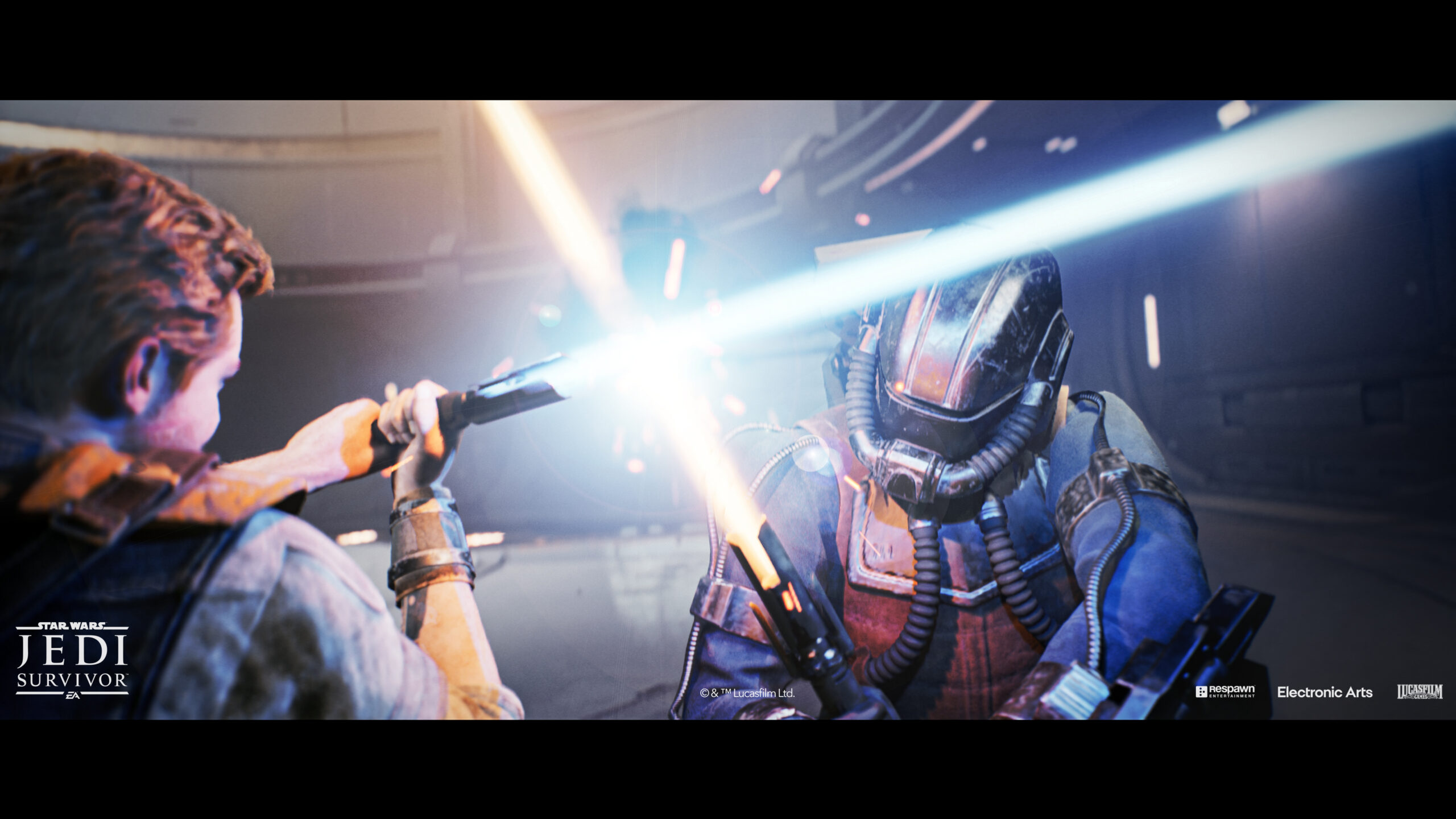
On that note, though, the game only lets you equip two stances at a time, and you’re stuck with them until you find a Meditation Point (these games’ version of Dark Souls‘ rejuvenating, save-enabling Bonfires). Initially, I thought this cap would be a hindrance, but I later came to appreciate the strategic wrinkle it added since it challenges you to decide the best pairing depending on the situation. Plus, Meditation Points are plentiful enough that I could always swap them out before too long anyway. Ultimately, there’s an undeniable thrill in switching between all of these stances on the fly, whatever your loadout, creating some of the best dynamic saber combat in all of gaming.
Respawn has also thankfully opted to avoid the classic Metroid-style ‘lose all of your abilities from the last game’ intro, so you retain everything from Fallen Order and don’t have to worry about reacquiring moves like the double jump. Instead, the developer focuses on expanding Cal’s arsenal through other means, such as a mid-air dash for extra mobility and, to borrow another move from Ben Solo, the ability to freeze enemies with the Force. Although the skill trees to upgrade these moves feel pretty basic, there’s a good enough variety of them to make progression still feel meaningful.
A galaxy that actually feels big
Part of the problem with modern Star Wars is that everything often feels so small, with stories returning to the same (or similar) planets and characters. Jedi: Survivor, however, really taps into the sense of wonder of the original trilogy. That all comes down to the drastically expanded areas, with Koboh, the game’s hub planet, serving as its largest and most dense locale. In particular, I appreciated how Respawn didn’t go with the traditional — and boring — “this place is focused on fire, this place is all about water” sort of design, with each planet instead feeling appreciably diverse in its geography.
Take Koboh; you’re initially dropped into a rocky, desert area, but that soon leads to a lively Tatooine-inspired town, lush forest, and swampy, almost oil refinery-esque Imperial base. That’s to say nothing of the thrilling intro level of Coruscant (which looks especially stunning on PS5), Kamino-esque ‘Shattered Moon,’ and eerie, sandstorm-filled Jedha.
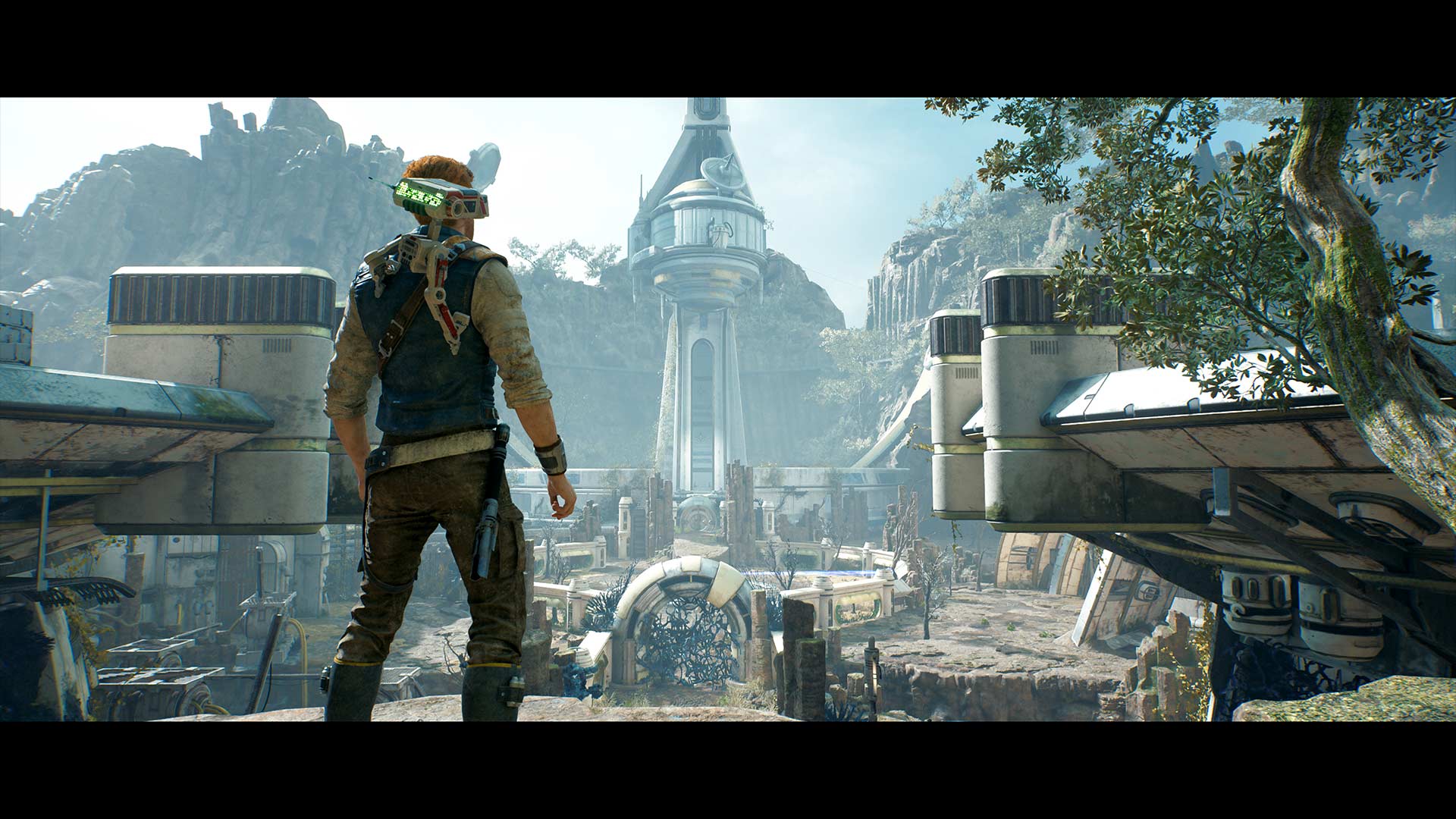 But it’s not enough for everything to just look distinct, so Respawn has ensured that it also all feels different. To be clear, the game isn’t open-world, but that’s a good thing, as there are more than enough bloated games in that genre. Instead, Survivor feels meticulously crafted, with an inherent approach to exploration that’s one of the best I’ve seen in a modern AAA game. While a lot of big-budget titles are all too quick to full on spell out exactly what you have to do, even in puzzles, Survivor instead goes for optional hints and a marker-light quest system. Often, talking to an NPC will trigger a sidequest (known here as ‘Rumors’), but you’re usually not given much information beyond ‘go to this area to investigate this mysterious event or point of interest.’ From there, it’s up to you to figure out how to actually reach that area, be that through a well-designed wall-running section, animal mount, or new item that can clear a previously inaccessible barrier, Metroidvania-style.
But it’s not enough for everything to just look distinct, so Respawn has ensured that it also all feels different. To be clear, the game isn’t open-world, but that’s a good thing, as there are more than enough bloated games in that genre. Instead, Survivor feels meticulously crafted, with an inherent approach to exploration that’s one of the best I’ve seen in a modern AAA game. While a lot of big-budget titles are all too quick to full on spell out exactly what you have to do, even in puzzles, Survivor instead goes for optional hints and a marker-light quest system. Often, talking to an NPC will trigger a sidequest (known here as ‘Rumors’), but you’re usually not given much information beyond ‘go to this area to investigate this mysterious event or point of interest.’ From there, it’s up to you to figure out how to actually reach that area, be that through a well-designed wall-running section, animal mount, or new item that can clear a previously inaccessible barrier, Metroidvania-style.
Along the way, you’ll find tons of offshoot passageways, challenge arenas, puzzles and even new regions if you choose to venture off the beaten path. In my early hours on Koboh, I took a break from from searching for Greez (the fan-favourite four-armed wise-cracking alien from the first game), and that led me to encounter some fun nods to the Separatists of the prequels, an atmospheric puzzle-filled High Republic temple and, even, a punishingly tough Rancor miniboss.
“I knew going into Jedi: Survivor that Respawn would deliver another great Star Wars game, but by the time the credits rolled, it had cemented itself as one of my favourite pieces of Star Wars media ever.”
There’s a constant sense of discovery in Survivor that’s only enhanced by the impressive amount of enemy variety, ranging from Stormtroopers, droids, bounty hunters and all kinds of rabid beasts. Koboh even has some minigames, including the strategy-based Holotactics and a gardening sim. I’ll confess that I didn’t find them particularly interesting, especially compared to the addictive moment-to-moment exploration, but it’s certainly neat to have even more gameplay variety.
At the same time, Respawn has satisfyingly addressed two key complaints from Fallen Order: the lack of fast travel and diversity in rewards. Having to constantly backtrack only to find a goofy new poncho for Cal put a real damper on that game’s exploration. Here, though, you can fast travel between any Meditation Point, while the game as a whole offers a much larger number of collectibles, including stat-increasing items, tons of cosmetic options for Cal’s head, clothing and lightsaber. Hilariously, there are even unlockable goatee options in chests. By improving the overall level design and art direction and introducing many types of loot, Survivor feels like a huge step forward from its predecessor.
Strong in the Force
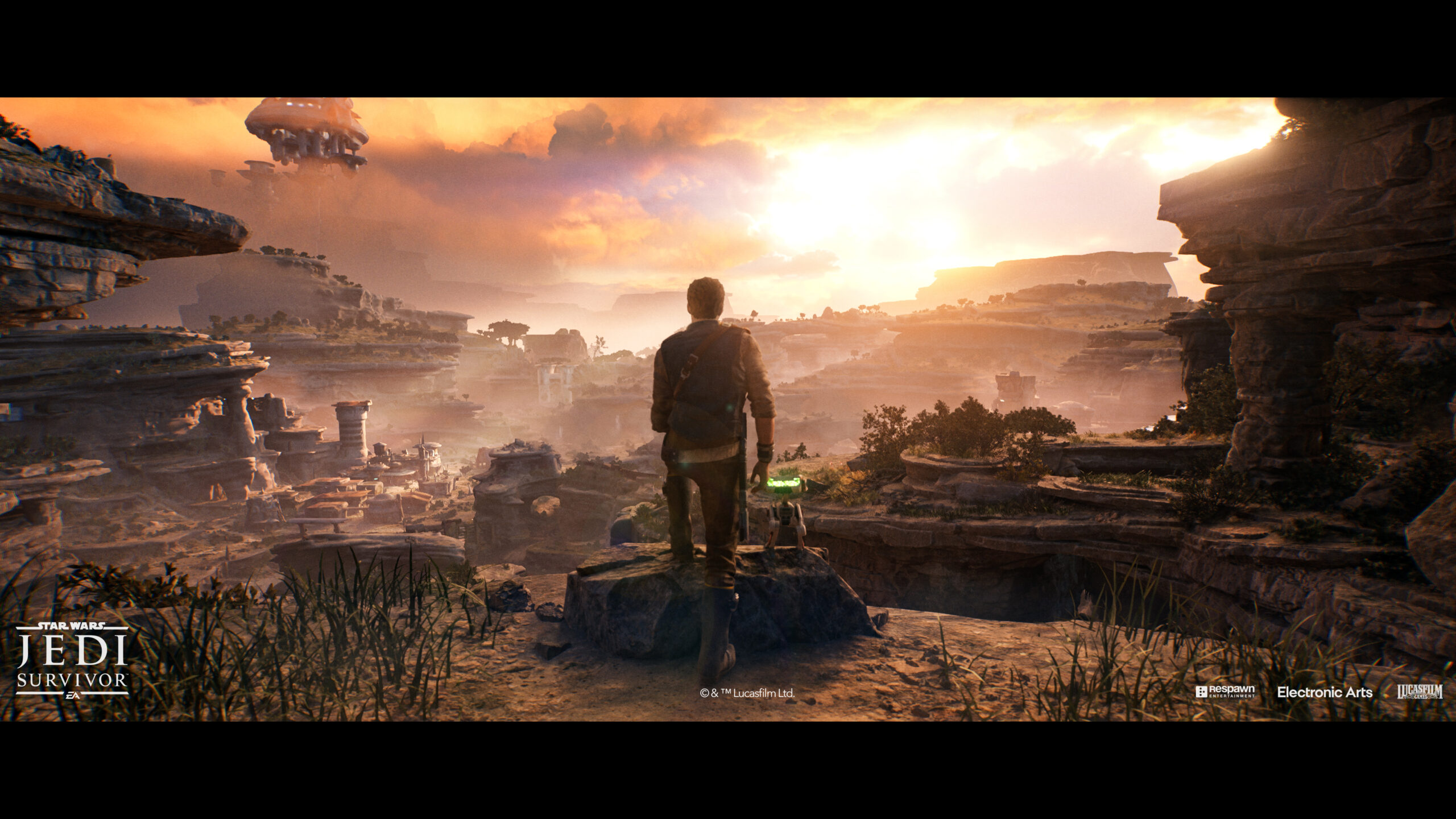 I knew going into Jedi: Survivor that Respawn would deliver another great Star Wars game, but by the time the credits rolled, it had cemented itself as one of my favourite pieces of Star Wars media ever. Picking up from the solid narrative foundations from Fallen Order, Respawn has told a touching and engrossing tale about love and loss. With that as the emotional core, Survivor also dramatically improves upon every other facet of Fallen Order, injecting a staggering amount of variety into combat, traversal and side content. All we need now is for Respawn to make its planned third game and we’ll have ourselves one of gaming’s absolute best trilogies.
I knew going into Jedi: Survivor that Respawn would deliver another great Star Wars game, but by the time the credits rolled, it had cemented itself as one of my favourite pieces of Star Wars media ever. Picking up from the solid narrative foundations from Fallen Order, Respawn has told a touching and engrossing tale about love and loss. With that as the emotional core, Survivor also dramatically improves upon every other facet of Fallen Order, injecting a staggering amount of variety into combat, traversal and side content. All we need now is for Respawn to make its planned third game and we’ll have ourselves one of gaming’s absolute best trilogies.
Star Wars Jedi: Survivor is now available on PlayStation 5, Xbox Series X/S and PC.
Note: The game has received significant criticism for being riddled with all kinds of technical bugs, including framerate dips, crashes and even lost save data, especially on PC. For what it’s worth, I encountered no issues on PS5 beyond the infrequent chugging in some sections and one instance of Cal clipping through the ground before returning to normal. That said, I want to acknowledge that many have had a far poorer experience with Jedi: Survivor than I have, and considering a similar situation occurred with Fallen Order, it’s especially egregious that this has happened. While the core game is amazing for the reasons I’ve mentioned, you may want to hold off on buying until further patches are released.
Image credit: EA
MobileSyrup may earn a commission from purchases made via our links, which helps fund the journalism we provide free on our website. These links do not influence our editorial content. Support us here.


